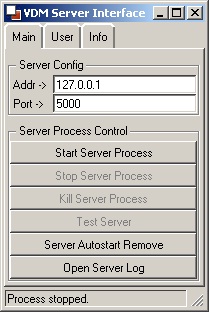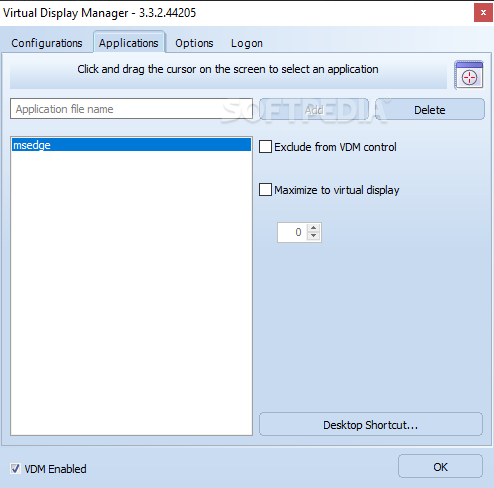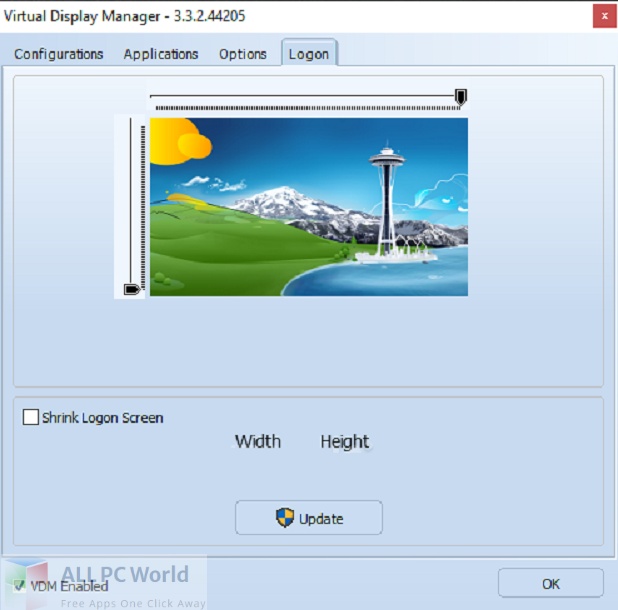

- VIRTUAL DISPLAY MANAGER VS DRIVERS
- VIRTUAL DISPLAY MANAGER VS DRIVER
- VIRTUAL DISPLAY MANAGER VS MANUAL
- VIRTUAL DISPLAY MANAGER VS PASSWORD
It is stored in the XML file on the virtual machine: # in /etc/libvirt/qemu/vmname.xml Tab) and select the keyboard layout that you need. If this is a problem for you, you need to go to the Virtual Machine Manager's detailed view ( Display

Other VNC clients always transfer keyboard input to reflect the US layout. If the host and guest system use the same keyboard layout, you will not experience any mapping problems.

The VNC client integrated into Virtual Machine Manager, or virt-viewer, transfers keyboard input in the form of RAW code. To find the right port number, just add 5900: root# virsh list If you do not work with Virtual Machine Manager, you can determined the display number with the vncdisplay Virsh command. Alternatively, you could use the vncviewer, vinagre, or virt-viewer programs.īy default, the first virtual machine to launch uses port 5900, the second port 5901, and so on. You will typically want to use the console window of the Virtual Machine Manager for this. To control the virtual machine, you need to run a VNC client on the local machine.
VIRTUAL DISPLAY MANAGER VS PASSWORD
However, VNC is a relatively insecure protocol, and using a VNC password will not do much to change this. The Virtual Machine Manager takes the settings of the Libvirt configuration file into consideration you can also set a VNC password here. The VNC server can only be addressed on 127.0.0.1 by default for security reasons. To be able to use VNC to control a virtual machine, qemu-kvm runs a VNC server, thus making the content of the virtual graphics adapter available on the network. At the same time, VNC passes local keyboard and mouse input through to the virtual machine. VNC stands for Virtual Network Computing and gives users the ability to display the screen content of another machine, including virtual machines, in a window (the VNC Viewer or VNC Client). (The Virtual Machine Manager is only suitable for managing virtual Xen machines that support this graphics adapter.) The qxl graphics adapter is available only if you select the Spice protocol in the Display The xen graphics adapter cannot be used with KVM. In the Virtual Machine Manager, you can set the desired graphics adapter in the virtual machine's detailed view Video section. qxl: This graphics card can only be used in combination with Spice.It supports high resolutions on the virtual machine without any major configuration overhead. If this is the case with your distribution, the VMware graphics card is a good choice.
VIRTUAL DISPLAY MANAGER VS DRIVERS
The matching open source graphics drivers are available out of the box with some Linux distributions.
VIRTUAL DISPLAY MANAGER VS DRIVER
You need to set up the Vesa driver explicitly in nf ( Listing 1).
VIRTUAL DISPLAY MANAGER VS MANUAL
The graphics card is correctly detected on Windows, but some manual configuration work is necessary on Linux. vga: The benefit of this virtual graphics card is that it supports far higher resolutions (tested up to 2560x1600 pixels).However, the maximum resolution is 1024x768 pixels. cirrus: This graphics card is correctly detected by just about any guest system and offers acceptable speed with no configuration overhead.In combination with KVM, you have a choice of four models: The Virtual Graphics Adapterįor the virtual machine to see a graphics system, QEMU emulates a graphics card. One alternative to VNC, however, is the new Spice protocol, which promises superior speed and a number of additional features. VNC is the standard choice for a remote desktop protocol it is widespread beyond the world of Linux and causes the least problems in production use. If you need a resolution above 1024x768 pixels, other virtual graphics cards are available however, on Linux guests, this setup often means a manual X configuration.Īdditionally, you must consider which protocol you should use to transfer the graphical data from the virtual machine to the client. By default, a (legacy) Cirrus graphics card is emulated. For one thing, KVM needs to provide a graphics adapter to the underlying QEMU system on the virtual machine. For graphical output to work on KVM-based virtual machines, several pieces of a puzzle need to fit.


 0 kommentar(er)
0 kommentar(er)
